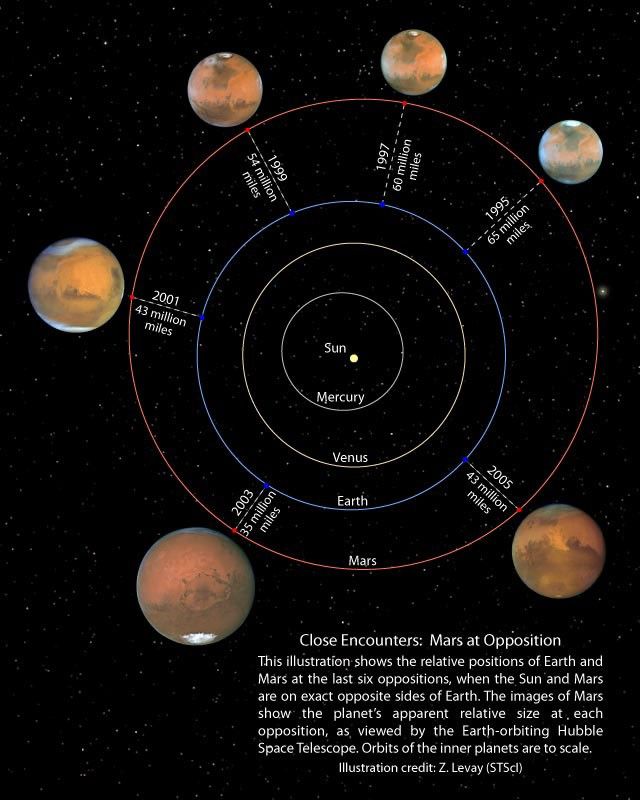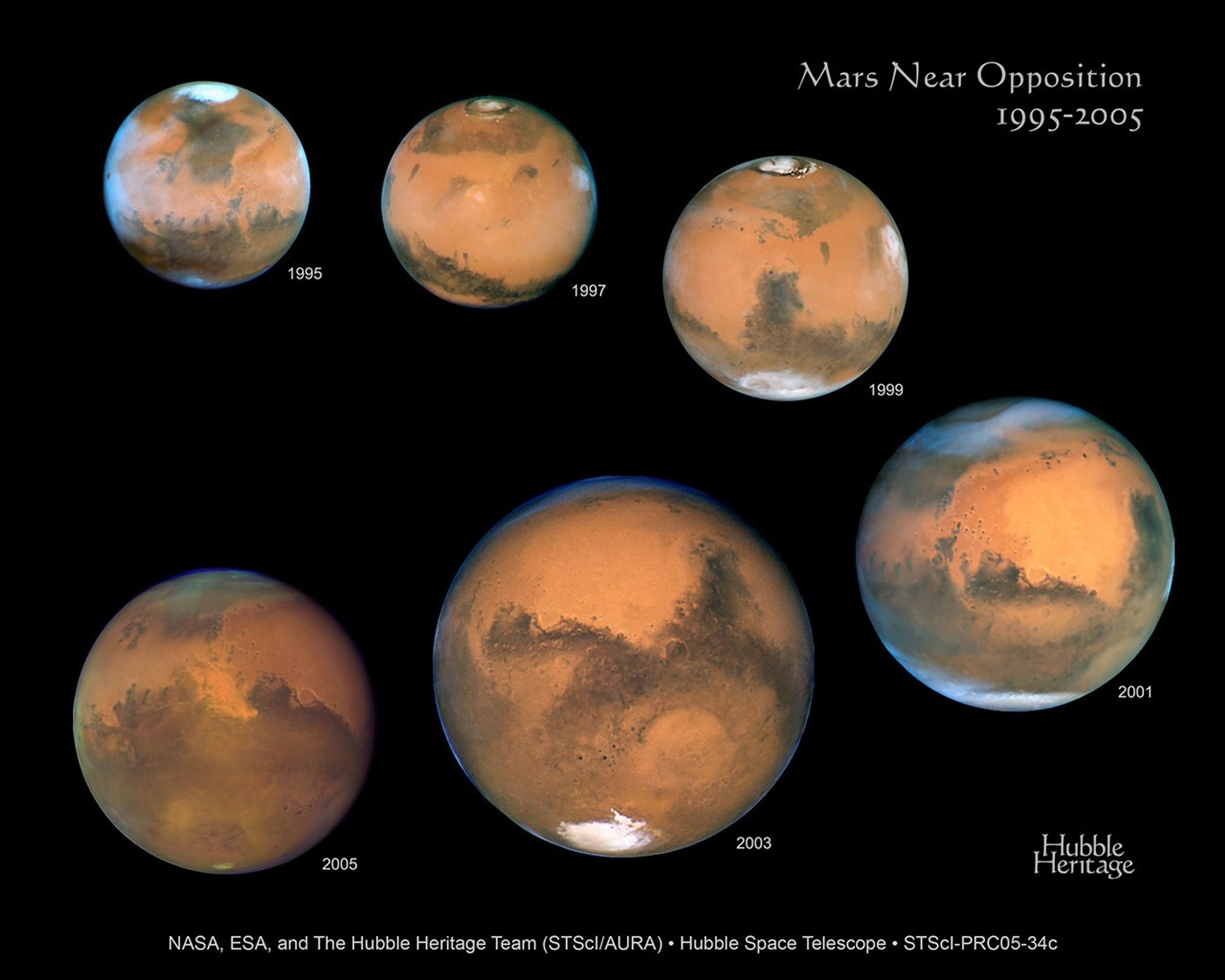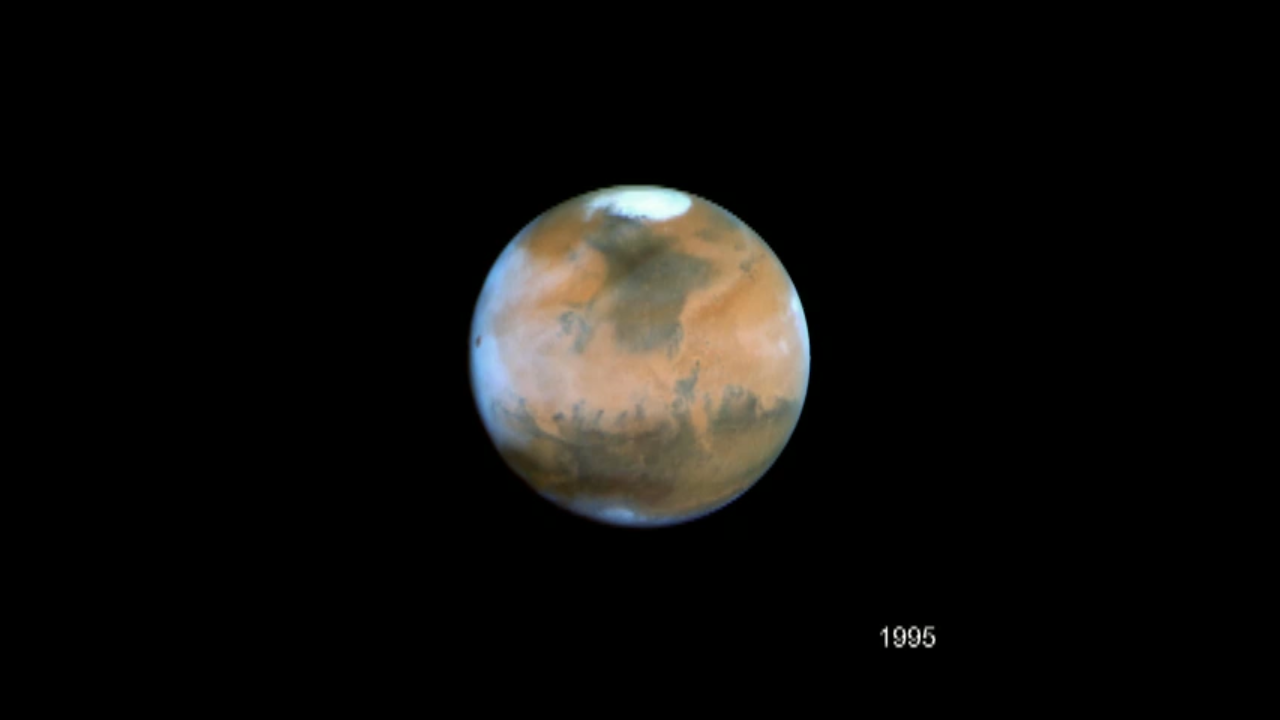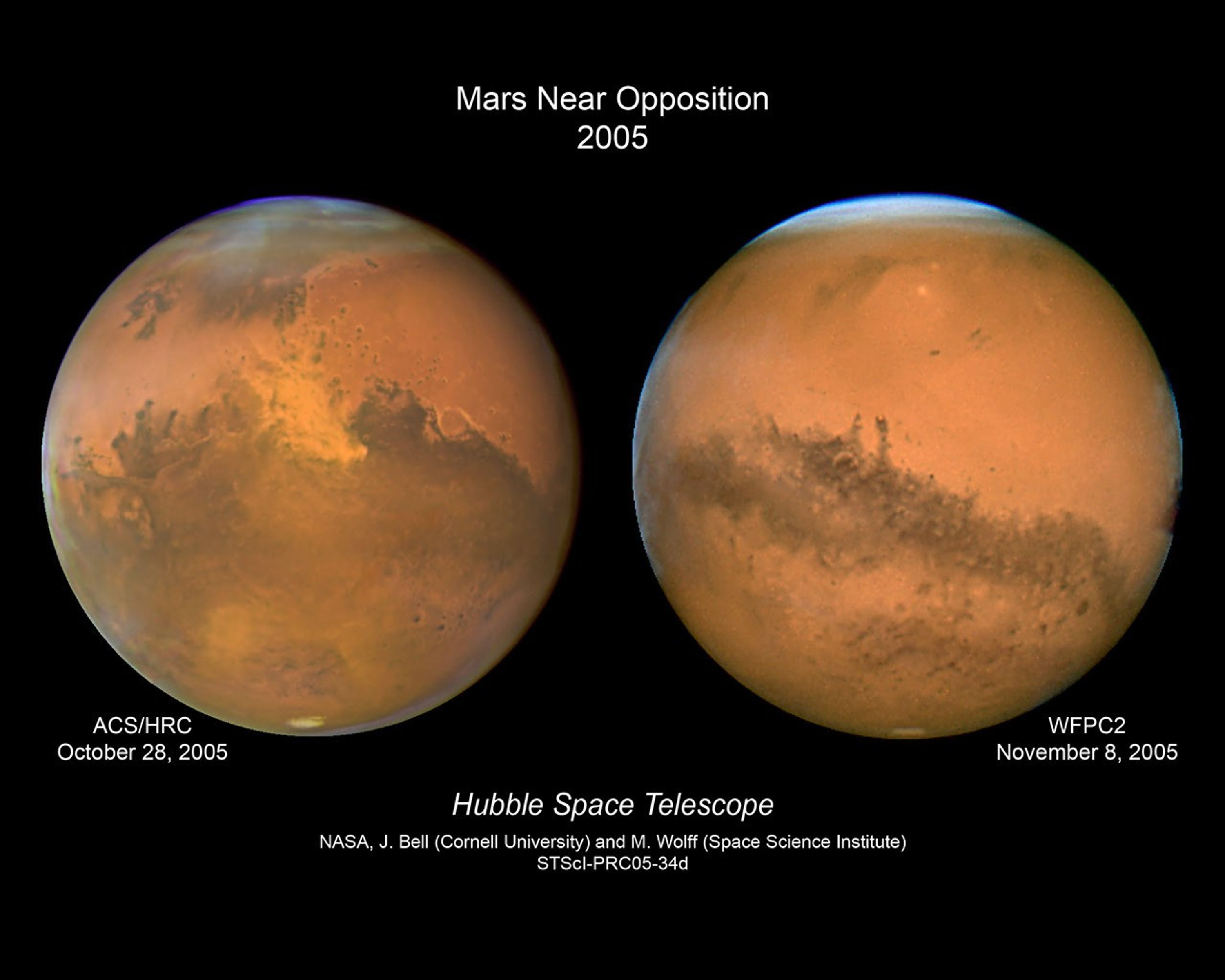1 min read
Close Encounter: Mars at Opposition

About the Object
- DistanceDistanceThe physical distance from Earth to the astronomical object. Distances within our solar system are usually measured in Astronomical Units (AU). Distances between stars are usually measured in light-years. Interstellar distances can also be measured in parsecs.[Distance from the Sun] The semi-major axis of Mars' orbit about the sun is 1.52 Astronomical Units (A.U.) or 142 million miles (228 million km). [Distance from Earth] At the 2005 closest approach, Mars was 43 million miles (69 million kilometers) from Earth. At the 2005 opposition event, Mars was 43.7 million miles (70.3 million kilometers) from Earth.
About the Data
- Data DescriptionData DescriptionProposal: A description of the observations, their scientific justification, and the links to the data available in the science archive.
Science Team: The astronomers who planned the observations and analyzed the data. "PI" refers to the Principal Investigator.The 2005 image was created from HST proposal 10770: K. Noll (The Hubble Heritage Team, STScI), J. Bell (Cornell Univ.), M. Wolff (Space Science Inst.), H. Bond, C. Christian, L. Frattare, F. Hamilton, W. Januszewski, Z. Levay, M. Mutchler, and T. Royle (The Hubble Heritage Team, STScI).
- Object NameObject NameA name or catalog number that astronomers use to identify an astronomical object.Mars
- Object DescriptionObject DescriptionThe type of astronomical object.Planet
- Release DateNovember 3, 2005
- Science ReleaseMars Kicks Up the Dust as it Makes Closest Approach to Earth
- Credit
Related Images & Videos

Dust Storm on Mars
Hubble images of the Sinus Meridiani region taken on October 28, 2005 show evidence of a regional dust storm. A comparable Hubble image taken on June 26, 2001 of the same region shows a storm-free environment. The dust storm, which is about 930 miles (1500 km) long, is about the...

Hubble's Visual History of Mars
The orbits of the planets Earth and Mars provide a geometric line up that is out of this world! Every 26 months Mars is opposite the Sun in our nighttime sky. Since the repair of the Hubble telescope in 1993, Mars has been at such an "opposition" with the Sun six times. A color...

Mars Image Showing the High Resolution Camera's "Occulting Mask"
The Advanced Camera for Surveys on Hubble Space Telescope includes two cameras, the Wide Field Channel (WFC) and the High Resolution Channel (HRC). Images from the WFC are roughly 4,000 pixels square with a scale of roughly 0.05 arcseconds per pixel. Images from the HRC are...

Hubble Views Mars Through the Years
Every 26 months Mars is opposite the Sun as seen from Earth. Since the repair of the Hubble telescope in 1993, Mars has been in opposition with the Sun six times. These dissolve sequences of each Mars opposition from 1995 to 2005 showcases the beauty and splendor that is 'The...
Share
Details
Claire Andreoli
NASA’s Goddard Space Flight Center
Greenbelt, Maryland
claire.andreoli@nasa.gov








































